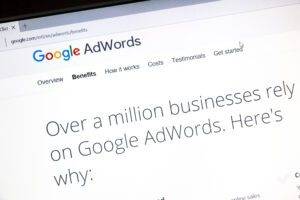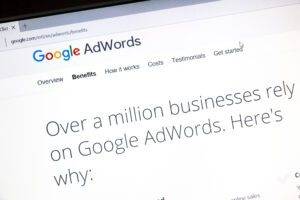
Mistakes to Avoid in Google Ads: Top Blunders to Sidestep From the PPC Experts

PPC or pay-per-click Google Ads, as they are also known, can be a very effective strategy to drum up online business for many enterprises. Indeed, when used correctly, they can give sites a short-term boost of both traffic and conversions, ensuring businesses can reach their revenue goals.
They can also have a great value ROI when used correctly because, as their name suggests, Google only charges a business when a potential customer clicks on their ad. That means a business only pays for the ads that are grabbing potential customers’ attention.
However, just like SEP and content marketing, PPC Google Ads can be challenging to get right. The good news is you can find out about some of the most common missteps and how to sidestep them and achieve maximum impact in the post below written by PPC experts. Keek reading to find out more.
Blunder 1: Not Using Enough Keyword Diversity
The whole point of using keywords in PPC ads is to match with those searching for the product that the business in question is offering. Unfortunately, this can often lead businesses to become too narrow in the keywords they select to use in the PPC campaigns, and this can limit their efficacy.
Instead, a good PPC campaign will include a balance of keywords that provide a more rounded target. With this in mind, businesses devising their PPC campaigns need to consider three crucial things: search intent, search match type, and search volume.
How To Sidestep Blunder 1:
Sidestepping blunder one means increasing keyword diversity. There are several ways to do this including:
Utilising Search Intent
Search intent is essential to improve keyword diversity in PPC campaigns. This is because it helps businesses to match their adverts to what users are looking for. There are different types of search intent to consider, including information intent, navigational intent, commercial intent, and transactional intent.
While it can seem better to include more transactional keywords in a PPC campaign, it can also be beneficial to use a combination of the other types as well. This is because it can provide greater access to potential customers. Of course, working out search intent can be tricky; that is why many businesses choose to work with an expert PPC agency in London and get them to do this for them. Indeed, with the combination of their expertise, and access to speciality software, PPC agencies can help a wide range of businesses improve their Google Ad campaigns.
Utilising A Mix Of Search Volumes
One of the ways keywords can be ranked is by their search volume. Those keywords with a high search volume are searched for a lot online. While keywords with a low volume are searched for a great deal less online.
At first glance, it would seem as if only including keywords with a high search volume is the correct way to go about things here but this is not the case. Instead, it’s a much better strategy to include keywords with both high and low volumes. The reason for this is that while low search volume keywords will generate less traffic, they are also likely to be better matched to what customers are looking for and therefore can help generate a higher conversion rate.
Blunder 2: Forgetting To Use Negative Keywords
While choosing the right words to match for in PPC is crucial, many businesses overlook a vital aspect of keyword matching – the ones they do not want their campaigns to match for. Otherwise known as negative keywords.
Negative keywords are so important when developing a PPC campaign because they help to prevent false positives, which can waste budget allowance. For example, if a business is selling moisturiser and someone types in “free moisturiser sample” into the search bar their PPC could be activated.
The problem is that the person concerned isn’t looking for the paid product offered by a business but a free version, and this means they are very unlikely to buy what the business is paying to promote through PPC. This means that the business will quickly use up its PPC budget because its ad is triggered by people who are a poor match and will not convert.
How To Sidestep Blunder 2:
The way to avoid blunder three is to make sure negative keywords are included. Organisations interested in doing this need to go to the search report terms section in Google Ads. From there, they can click on keywords and then search terms. This will provide them with ideas for negative keywords.
Blunder 3: Not Using High-Quality Ad Copy
The quality of the copy used in a PPC campaign is crucial to its success. This means focusing only on the technical side of things like keywords and ignoring the need for high-quality copy can seriously impact the effectiveness of a campaign.
Indeed, low-quality copy that is not specifically matched to the internet audience and that does not demonstrate the value of the product or service being sold will result in fewer click-throughs and even fewer conversions.
How To Sidestep Blunder 3:
To avoid common PPC blunder 4, businesses must use well-written copy that has been customised specifically to their brand. Additionally, reviewing and testing ad copy to optimise its performance can be very helpful here. Indeed, using RSAs (responsive search ads) allows companies to test how more than one headline and type of description perform, allowing further refinement.
Read more:
Mistakes to Avoid in Google Ads: Top Blunders to Sidestep From the PPC Experts
